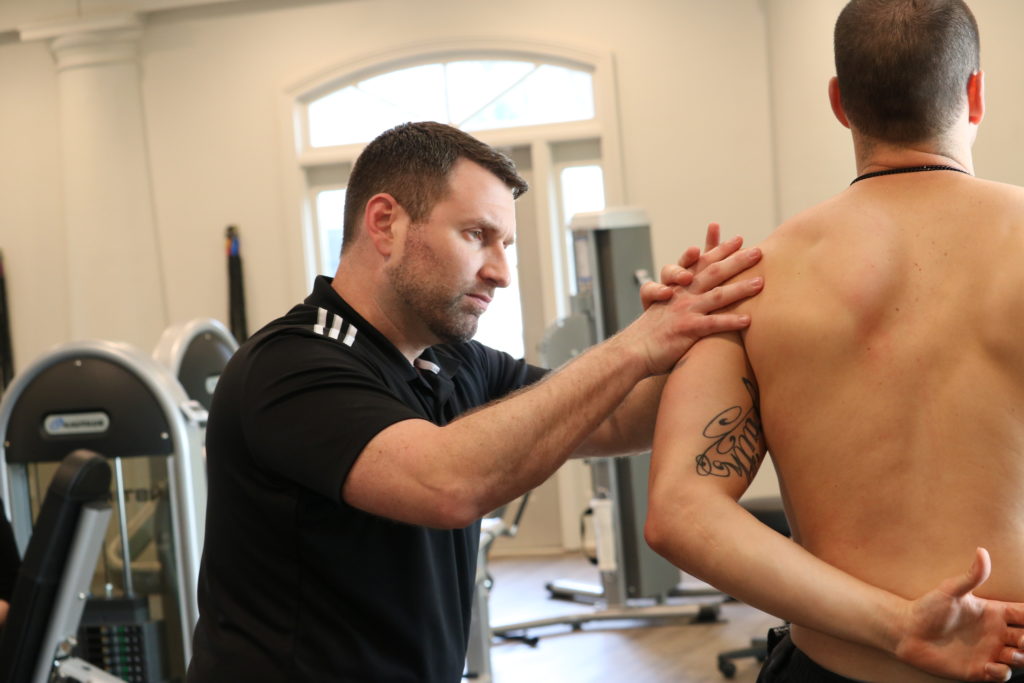Cervical radiculopathy occurs when a nerve in the neck becomes irritated or compressed where it leaves the spinal cord. It is more commonly referred to as a “pinched nerve,” which describes the condition that causes pain to radiate to your shoulder and arm along with numbness and loss of strength. The causes of a pinched nerve change as you age and can occur anywhere along the cervical spine. Here is a closer look at the signs and causes of a pinched nerve and the benefits of physical therapy in treating this condition.
What are the Symptoms of Cervical Radiculopathy?
Typically, pain from a pinched nerve begins in the neck and radiates through the should and down the arm on the side of the affected nerve. Specific actions can amplify this sensation. Extending your arm, straining your neck, and moving your head can make this pain increase. It is also common to have a stinging feeling like “pins and needles” down to the hand and fingers. It is also common to lose strength in the arms, shoulders, and hands and a loss of sensation.
What Causes a Pinched Nerve?
Wear and tear, repetitive athletic movements, and sudden impacts and injuries to and toward the cervical spine are the typical causes of a pinched nerve. As the spine changes, grows, and moves in different ways, the propensity of cervical radiculopathy grows. Bulging, herniated, and intervertebral disks all occur as the spine ages. Degenerative changes all affect the height of the spinal disks. They become drier, thinner, and more rigid, supporting the chances of their collapse. As the vertebrae move closer together, the body builds more bone, often causing bone spurs, narrowing the spinal column, and pinching the nerves’ roots.
How Can Physical Therapy Help to Treat Cervical Radiculopathy?
Physical therapy can be a very effective method of treating and repairing the effects of cervical radiculopathy. With a well-guided strategy of exercises, movements, dry needling, manipulation, and other treatments, the effects of a pinched nerve can be alleviated. Making the muscles and joints stronger and more flexible, the likelihood of experiencing this condition again is significantly mitigated.
What are the Benefits of Spinal Manipulation for Cervical Radiculopathy?
Spinal manipulation can be a very effective physical therapy treatment for relief from the pain caused by a pinched nerve. Specifically, HVLA, or high velocity, low amplitude thrust manipulation can decrease pain. This type of manual therapy works for patients that experience neck pain with and without radical arthritis symptoms. Spinal manipulation can treat back and neck pain, migraines, shoulder pain, general headaches, and much more. This physical therapy technique can also help to prevent surgery, pain-relieving drug usage, and improve a patient’s overall range of motion.
The experienced staff of PTs at Evolve understand how cervical radiculopathy affects people of all ages. Their focus on young athletes and even athletes that are young at heart is geared toward treating their conditions to get them back on the field, course, and court.


